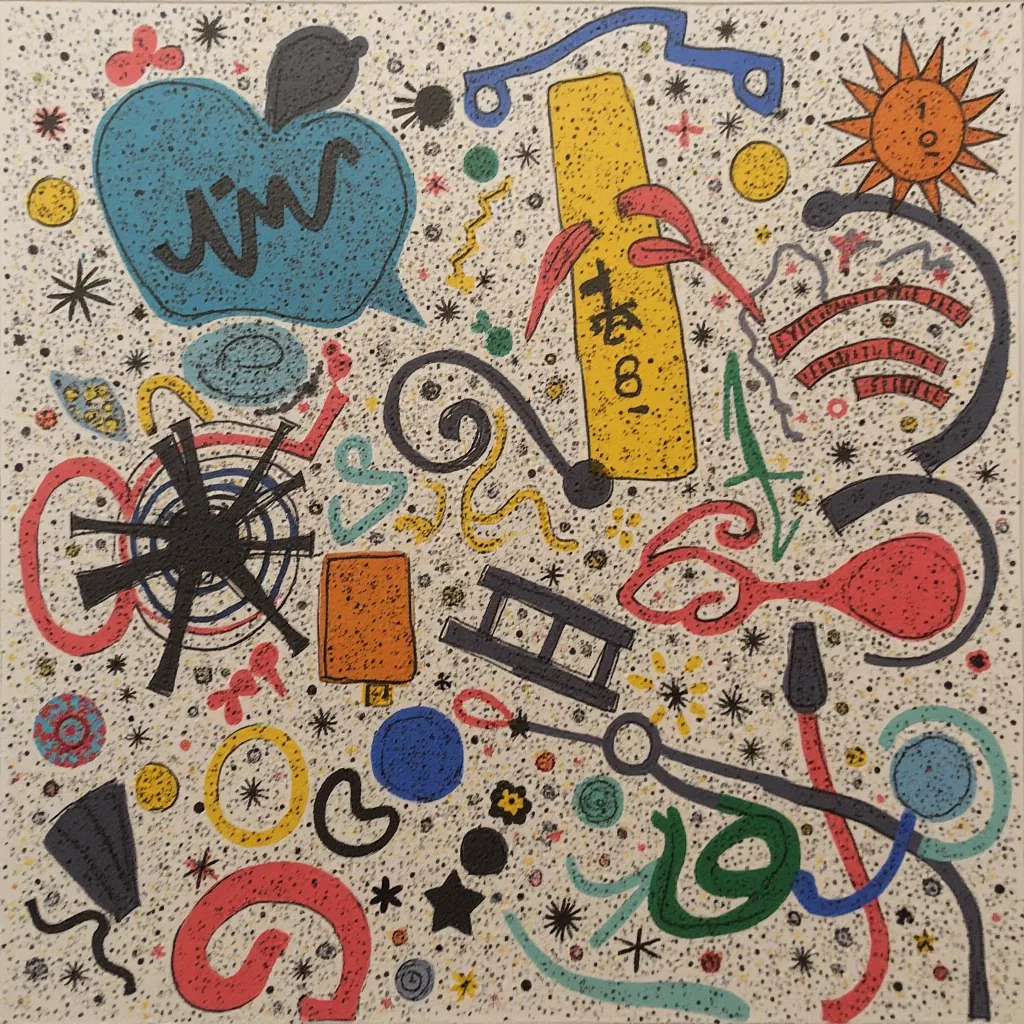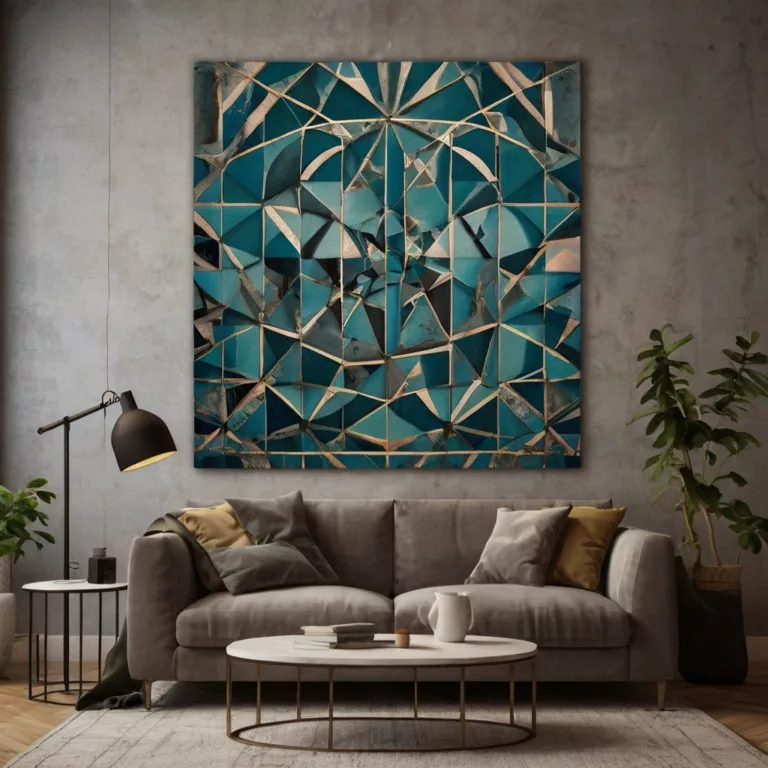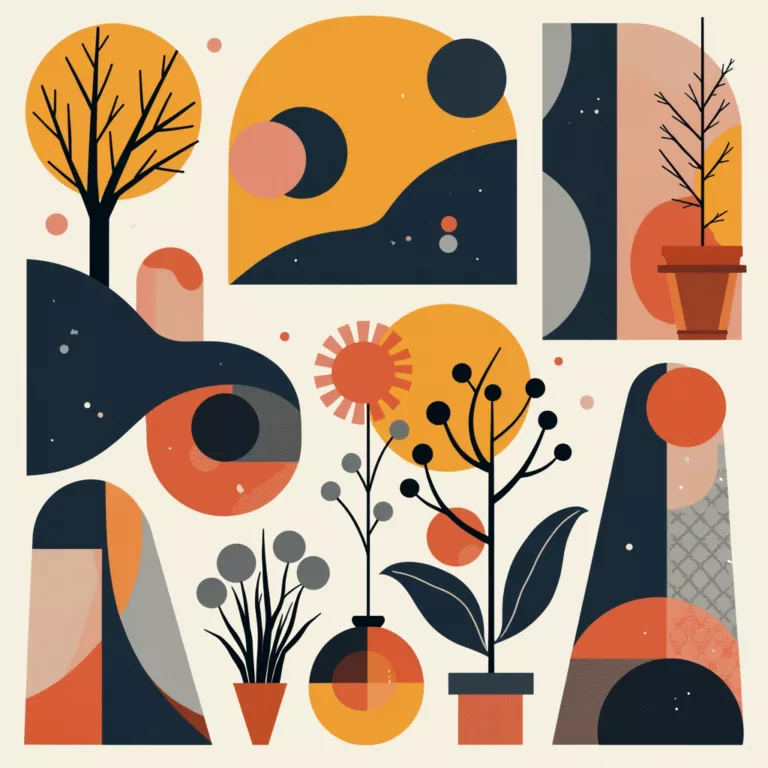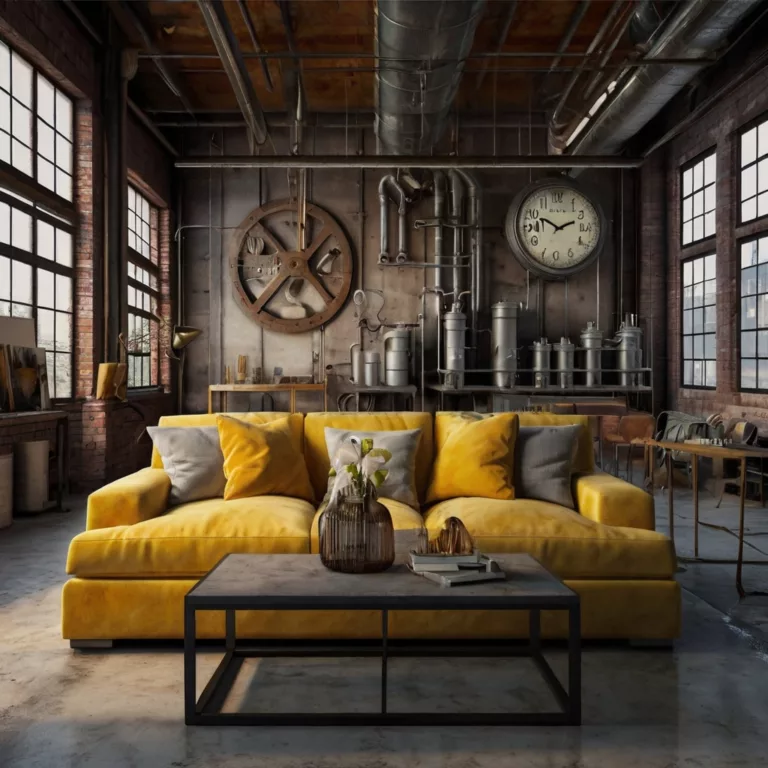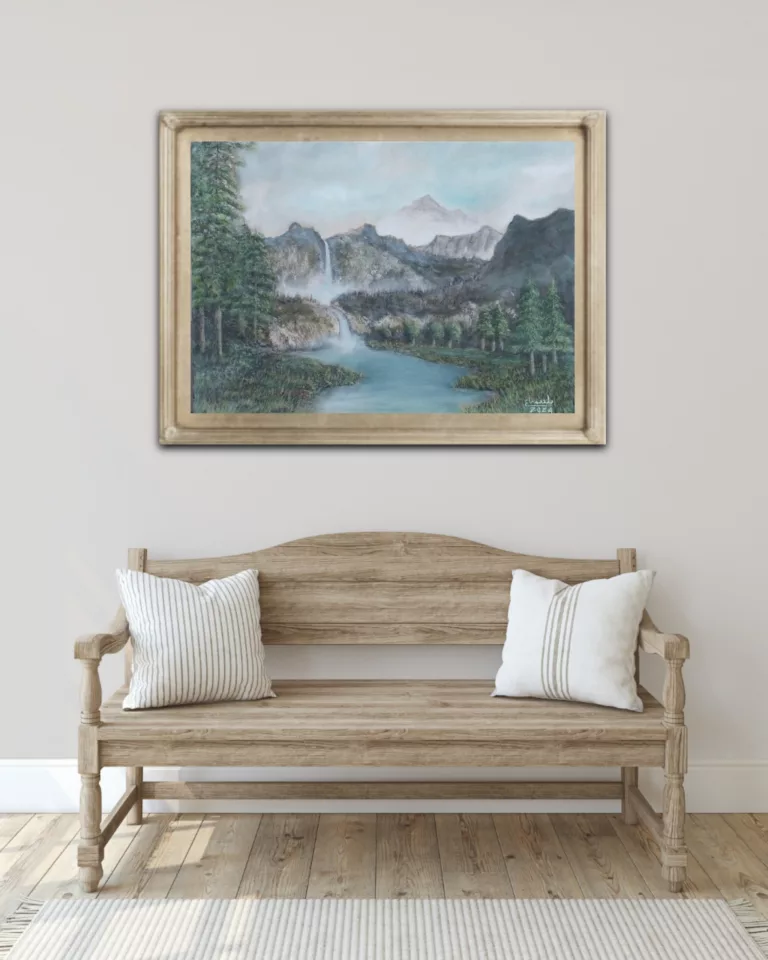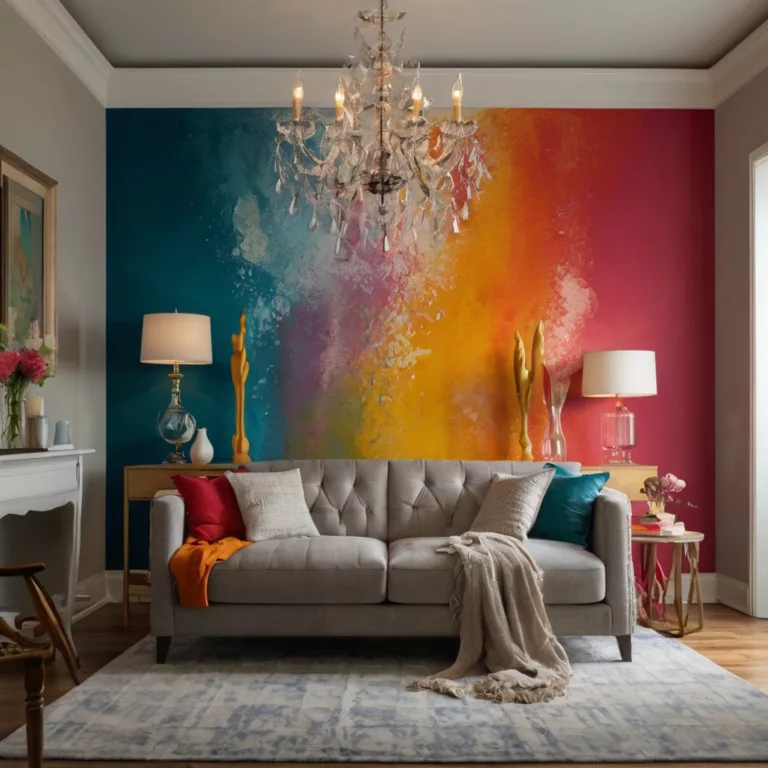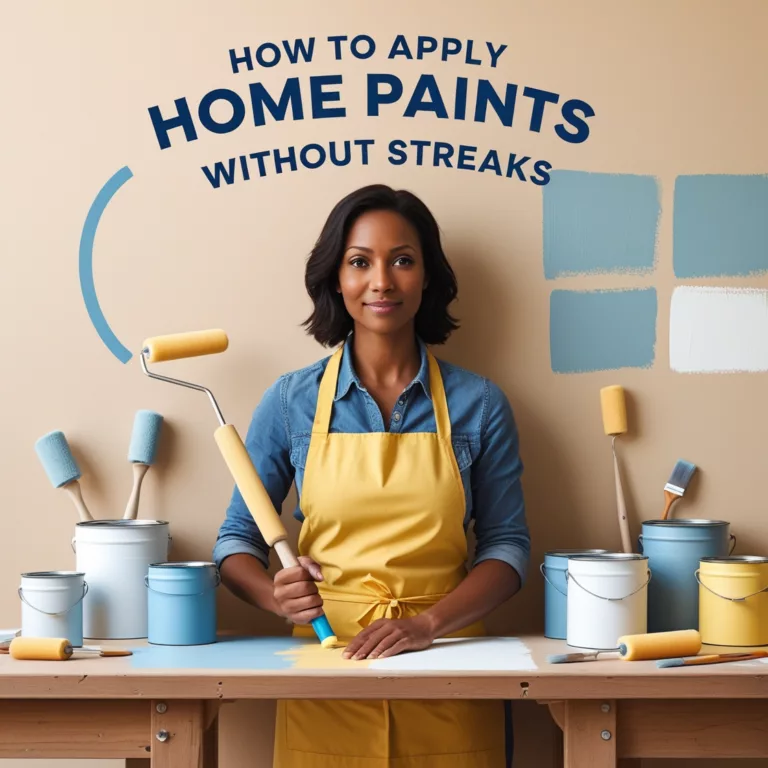Abstract Texture Techniques in Walls
The Philosophical Foundations of Textural Abstraction
At its essence, abstract textural work challenges conventional relationships between art and viewer by prioritizing surface quality over representational content, raising fundamental questions about perception and meaning.
The Tactile Dimension of Visual Experience
The human fascination with texture reflects our deeply embodied experience of the world:
- Haptic Perception: Even when texture exists solely as a visual element, our brains process it through neural pathways connected to physical touch. This phenomenon, known as “haptic visuality,” explains why textured surfaces can evoke such powerful responses even without direct contact.
- Material Consciousness: Abstract texture techniques often highlight a heightened awareness of materiality itself—what philosopher Maurice Merleau-Ponty termed the “flesh of the world”—drawing attention to the physical substance of existence rather than its visual representation.
- The Paradox of Surface and Depth: Textural abstraction frequently plays with the tension between surface immediacy and perceptual depth, creating works that simultaneously emphasize their material presence while suggesting infinite space beyond.
These philosophical dimensions have driven artists to explore texture not merely as decoration but as a fundamental means of inquiry into how we perceive and make meaning of the world through sensory experience.
Texture as Language: Beyond Visual Representation
Abstract texture techniques have evolved into sophisticated communication systems:
- Nonverbal Expression: Textural elements convey emotional and sensory information that transcends verbal or representational expression, communicating directly through material qualities.
- Embodied Metaphor: Physical textures often function metaphorically, with rough surfaces suggesting struggle or resistance, smooth areas conveying serenity or resolution, and irregular patterns evoking natural chaos or organic growth.
- Cultural Texture Syntax: Different cultural traditions have developed distinct “texture vocabularies” with shared meanings—from the restrained textures of Japanese minimalism to the rich layering common in various African artistic traditions.
This evolution of texture into a complex communicative medium has enabled abstract artists to develop nuanced expressions that speak directly to bodily experience while conveying conceptual complexity.
Historical Evolution of Abstract Texture Techniques
The development of abstract textural approaches reflects broader artistic movements and technological innovations throughout modern art history.
Early Modernist Texture Explorations
The foundations of abstract texture techniques emerged in the early 20th century:
- Cubist Collage: Picasso and Braque’s revolutionary introduction of pasted papers and found materials created unprecedented textural juxtapositions, challenging the flat picture plane and introducing real-world textural elements into fine art.
- Dada Material Subversions: Artists like Kurt Schwitters expanded collage techniques into three-dimensional assemblages in works like his “Merzbau,” incorporating discarded materials with diverse textural qualities to challenge conventional aesthetic hierarchies.
- Constructivist Material Investigations: Russian Constructivists including Vladimir Tatlin conducted systematic explorations of industrial materials, treating their inherent textural properties as meaningful design elements rather than surfaces to be disguised.
These early explorations established texture as a legitimate focus of artistic investigation rather than merely a by-product of representation.
Mid-Century Textural Revolutions
The post-war period witnessed explosive growth in textural experimentation:
- Art Informel and Tachisme: European artists including Jean Dubuffet and Antoni Tàpies developed highly textured surfaces incorporating sand, tar, and other non-traditional materials, creating weathered surfaces that evoked ancient walls and primitive expressions.
- Abstract Expressionist Impasto: Artists like Willem de Kooning built up paint in thick, sculptural layers that recorded the physical gestures of creation, transforming paint from a tool of representation into a textural material with its own presence.
- Gutai Material Investigations: The Japanese Gutai group conducted radical experiments in texture, with artists like Kazuo Shiraga painting with his feet and Shozo Shimamoto throwing bottles of paint against canvases to create explosive textural effects.
- Nouveau Réalisme Accumulations: Artists including Arman compiled objects with similar textures into compositions, creating taxonomies of textural experience through collected materials.
This mid-century period legitimized texture as a primary concern rather than a secondary characteristic, establishing technical approaches still influential today.
Contemporary Textural Complexity
Recent decades have seen increasingly sophisticated approaches to texture:
- Digital-Physical Hybridization: Contemporary artists combine digital processes with physical textures, using techniques like 3D printing to create precisely controlled textural surfaces impossible to achieve through traditional methods.
- Environmental Scale Textures: Installation artists including Anish Kapoor and Olafur Eliasson create immersive environments where textural elements envelop viewers, transforming texture from a visual element to a spatial experience.
- Biological and Living Textures: Some contemporary artists incorporate living organisms or biological processes that create evolving textural surfaces, challenging traditional notions of artistic control and permanence.
- Global Textural Dialogues: Increasing cross-cultural artistic exchange has created hybrid approaches to texture that combine diverse cultural traditions, from Japanese wabi-sabi aesthetics to African textile techniques.
This contemporary landscape demonstrates how abstract texture techniques continue evolving, incorporating new technologies while maintaining connections to bodily experience and material awareness.
Fundamental Techniques for Creating Abstract Texture
A comprehensive understanding of abstract textural approaches requires familiarity with key methodologies across different media.
Additive Texture Techniques
These approaches build surface through accumulation of material:
- Impasto Application: Paint applied in thick, sculptural strokes using palette knives, putty knives, or specialized impasto mediums creates pronounced textural relief. Contemporary artists often combine traditional oil impasto with acrylic modeling pastes for accelerated drying and greater structural stability.
- Collage and Assemblage: Incorporating found materials—from traditional papers to industrial fragments, organic materials, and manufactured objects—creates complex textural juxtapositions. Advanced practitioners develop sophisticated approaches to adhesion and preservation to ensure durability.
- Textural Mediums and Gels: Specialized acrylic additives create specific textural effects, from fine granite-like surfaces to pronounced peaks and ridges. These can be tinted, layered, or selectively applied to create complex textural compositions.
- Built Relief: Constructing three-dimensional elements that project from the surface creates dramatic textural contrast, particularly effective when combined with lighting that creates shadow patterns enhancing depth perception.
These additive approaches create physical dimensionality that interacts with light to produce constantly changing visual experiences as viewing positions shift.
Subtractive Texture Techniques
These methods create texture by removing or manipulating existing material:
- Scraping and Sgraffito: Removing portions of wet paint or other media with combs, cards, or specialized tools creates linear patterns and reveals underlying layers. Advanced practitioners develop precisely controlled gestures that create consistent textural fields across large surfaces.
- Solvent Manipulation: Selectively dissolving or disturbing partially dry paint with solvents creates organic textural patterns mimicking natural processes. This technique requires precise timing and material knowledge to prevent unintended effects.
- Abrasion and Sanding: Physically wearing away surfaces through sanding, scraping, or burnishing creates textural variations and reveals underlying layers. Contemporary approaches often combine mechanical abrasion with chemical processes for complex surface effects.
- Erosion and Controlled Damage: Deliberately subjecting surfaces to corrosive substances, heat, or physical impact creates textural effects impossible to achieve through additive processes alone.
These subtractive techniques often evoke natural weathering processes, creating surfaces with emotional resonance connected to themes of time, decay, and transformation.
Chemical and Reactive Texture Techniques
These approaches utilize chemical reactions to generate textural effects:
- Crazing and Crackle: Specialized mediums designed to crack during drying create networks of fine textural lines. Advanced applications layer different crackle patterns at various scales for complex results reminiscent of aged surfaces.
- Granulation and Precipitation: Certain painting media, particularly watercolors containing specific mineral pigments, naturally separate during drying to create subtle textural patterns. Artists manipulate these effects through paper selection, humidity control, and application technique.
- Acid Etching: Controlled application of acidic compounds to reactive surfaces creates deeply etched patterns. Contemporary applications extend beyond traditional metal etching to include stone, glass, and specialized polymer surfaces.
- Oxidation and Patination: Encouraging controlled corrosion on metal elements or metallic pigments creates evolving textural surfaces with rich color variations. Advanced practitioners develop precise chemical formulations to achieve specific effects.
These chemical approaches introduce an element of controlled unpredictability, creating textural effects that evolve organically while guided by artistic intent.
Transfer and Impression Techniques
These methods capture textures from existing sources:
- Rubbings and Frottage: Capturing textures from physical surfaces by placing paper or canvas over them and rubbing with graphite, crayon, or other media. Contemporary approaches often digitally manipulate these captured textures before incorporating them into larger compositions.
- Monoprinting and Texture Stamping: Applying paint to textured surfaces and transferring the impression to another support creates repeatable yet unique textural patterns. Advanced practitioners create libraries of textural elements that can be combined compositionally.
- Cast Textures: Creating molds from textured surfaces allows reproduction and modification of found textural elements in new materials. Contemporary approaches often combine traditional plaster casting with silicone molds and resin casting for precision reproduction.
- Digital Texture Mapping: Photographing physical textures for digital manipulation and output allows unprecedented control over scale, repetition, and integration of textural elements. This approach bridges traditional material understanding with contemporary production methods.
These transfer techniques enable artists to incorporate environmental textures into studio work, creating dialogues between natural and constructed textural elements.
Contemporary Mixed Media Textural Approaches
Today’s most innovative abstract texture techniques often combine multiple approaches across traditionally separate media.
Integration of Digital and Physical Textures
The boundary between digital and physical textural creation continues blurring:
- 3D Printed Textures: Computer-generated textural designs printed in three dimensions create precisely controlled surface patterns impossible to achieve manually. Advanced applications combine multiple printing materials with varied flexibility, transparency, and surface qualities.
- Digitally Controlled Texture Application: CNC routing, laser etching, and robotic painting enable precise translation of digital textural designs to physical media. Contemporary artists frequently develop custom tools and software to create signature textural effects.
- Projected Texture: Digital projection onto textured surfaces creates dynamic interplays between physical and light-based textural elements. This approach transforms static textural surfaces into kinetic installations that evolve over time.
- Photogrammetry and Texture Recreation: Digital scanning of existing textures enables their analysis, modification, and physical recreation at new scales or in different materials, creating conceptual dialogues between original and recreated textural experiences.
These hybrid approaches maintain the sensory impact of physical texture while incorporating the precision and mutability of digital processes.
Unconventional Material Combinations
Contemporary texture artists increasingly work with unexpected material pairings:
- Hard/Soft Juxtapositions: Combining rigid materials like metal or glass with soft, flexible elements creates compelling textural contrasts that challenge tactile expectations and create visual tension.
- Synthetic/Organic Integration: Pairing industrial polymers with natural materials like wood, fiber, or stone creates textural dialogues between manufactured and natural surfaces, often with environmental or anthropocentric themes.
- Transparent Layering Systems: Building complex textural compositions through multiple transparent or translucent layers creates depth-based textural effects that change with viewing angle and lighting conditions.
- Micro/Macro Textural Relationships: Incorporating textural elements at dramatically different scales creates perceptual complexity that rewards both distant viewing and close examination, encouraging physical movement by the viewer.
These material combinations often carry conceptual significance beyond their formal qualities, addressing themes of technological change, environmental concern, or cultural hybridity.
Temporal and Kinetic Texture
Some contemporary approaches incorporate time and movement into textural expression:
- Programmed Texture Transformation: Mechanical or electronic systems that gradually alter textural surfaces create works that evolve over minutes, hours, or months. These systems may respond to environmental conditions like temperature or humidity.
- Viewer-Responsive Textures: Surfaces that physically change in response to viewer proximity or touch transform passive observation into interactive experience. Advanced applications use sensors and microcontrollers to create sophisticated responsive behaviors.
- Phase-Changing Materials: Incorporating substances that change state—from solid to liquid or translucent to opaque—in response to environmental conditions creates surfaces with inherent temporal qualities.
- Decay and Transformation Processes: Some artists deliberately incorporate materials that will deteriorate, oxidize, or transform over time, making textural evolution an integral aspect of the work rather than undesired deterioration.
These temporal approaches transform texture from static quality to dynamic process, challenging conventional notions of permanence in visual art.
Technical Considerations in Abstract Texture Creation
Successful execution of abstract texture techniques requires understanding of both aesthetic principles and practical considerations.
Structural Integrity and Longevity
Creating durable textured surfaces presents specific technical challenges:
- Adhesion Principles: Different materials bond differently, requiring specialized adhesives and preparation techniques to ensure long-term stability of complex textural elements.
- Substrate Selection and Preparation: The foundation supporting textural elements must accommodate their physical characteristics without warping, separating, or degrading over time.
- Weight Distribution: Heavily textured works create significant structural stress, requiring careful attention to support systems, particularly for wall-mounted pieces.
- Expansion and Contraction Management: Materials respond differently to temperature and humidity changes, necessitating techniques that accommodate differential movement without surface failure.
These technical considerations become increasingly important as textural works grow in scale and complexity.
Surface Protection and Maintenance
Preserving textural qualities presents unique conservation challenges:
- Sealing Techniques: Protective coatings must preserve textural characteristics while providing environmental protection. Different textural approaches require specifically formulated sealants.
- Cleaning Considerations: Textured surfaces collect dust and debris differently than smooth surfaces, requiring specialized cleaning protocols that preserve delicate elements.
- Display Environment Factors: Lighting angles dramatically affect how textures are perceived, making installation decisions critical to successful presentation.
- Aging Expectations: Artists must consider how textural elements will evolve over time, either designing for stability or intentionally incorporating expected changes into the conceptual framework.
These preservation issues require collaborative approaches between artists, conservators, and materials scientists, particularly for public and institutional installations.
Material Compatibility and Interaction
Complex textural compositions require understanding of how materials interact:
- Chemical Compatibility: Materials in close proximity may interact chemically, particularly when adhesives, solvents, or reactive substances are involved in creation processes.
- Mechanical Interaction: Different expansion rates, flexibility, and structural properties create mechanical stresses that must be accommodated in design and construction.
- Optical Relationships: Materials affect each other’s appearance through reflection, absorption, and color casting, creating composite visual effects that may be difficult to predict.
- Environmental Response Differences: Materials react differently to light exposure, humidity, and temperature fluctuations, potentially causing unexpected changes in textural relationships over time.
These interactions become increasingly complex in mixed media works where traditional and innovative materials coexist.
Psychological and Perceptual Aspects of Abstract Texture
The power of abstract texture techniques derives partly from how human perception processes textural information.
Neurological Responses to Texture
Scientific research provides insight into why textures affect viewers so powerfully:
- Cross-Modal Perception: Neuroimaging studies show that visual texture activates both visual cortex and areas associated with tactile processing, creating multi-sensory experiences from purely visual input.
- Pattern Recognition Systems: The human brain contains specialized neural networks for identifying textural patterns, explaining why certain textures immediately evoke recognition (like wood grain or stone) even in abstract contexts.
- Pleasure Center Activation: Certain textural patterns activate reward centers in the brain similar to those triggered by music, suggesting an innate biological response to textural harmony.
- Memory Association Networks: Textures connect to autobiographical memory systems more directly than many other visual elements, explaining their powerful emotional associations.
These neurological factors help explain why textural art often evokes stronger emotional responses than visually similar work without textural elements.
Cultural and Contextual Dimensions
Textural responses are shaped by cultural background and personal experience:
- Cultural Texture Associations: Different cultures develop distinct associations with specific textures based on traditional materials, architectural environments, and climatic conditions.
- Generational Texture References: Age demographics often show different responses to textures associated with specific historical periods or technologies encountered during formative years.
- Economic and Class Signifiers: Certain textures carry strong associations with luxury or poverty, wealth or scarcity, triggering complex socioeconomic responses beyond purely aesthetic reactions.
- Natural Versus Synthetic Perception: The increasing presence of manufactured textures in contemporary environments creates complex relationships with textures perceived as “natural” or “authentic.”
These cultural dimensions mean that textural works may communicate differently across diverse audiences, adding layers of interpretive complexity.
Conceptual Frameworks in Contemporary Textural Art
Beyond technique, contemporary artists employ texture within diverse conceptual frameworks.
Material Politics and Social Commentary
Textural choices increasingly carry political and social meaning:
- Post-Colonial Textural Discourse: Artists from previously colonized regions reclaim traditional textural techniques as expressions of cultural resilience and commentary on globalization.
- Anthropocene Textures: Environmental artists create textural works that directly reference damaged ecosystems, pollution effects, or climate change impacts through material selection and surface treatment.
- Gendered Texture Dialogues: Feminist and queer artists explore traditionally gendered textural associations—from industrial roughness to domestic softness—challenging binary categories through unexpected material combinations.
- Economic Critique Through Material: Artists use contrasting textural elements to comment on wealth disparity, resource distribution, and consumption patterns, particularly through juxtaposition of luxury and discarded materials.
These approaches position texture not merely as formal element but as carrier of social and political meaning.
Philosophical Materiality and Ontological Exploration
Some artists use texture to investigate fundamental questions about existence and reality:
- Phenomenological Texture Investigations: Works that explore how texture mediates between object and perception, examining how material presence shapes conscious experience.
- Object-Oriented Ontology Approaches: Textural works that emphasize the independent reality of materials themselves, beyond human perception or utility, often presenting textures that resist easy categorization or comprehension.
- Entropy and Time Visualization: Textural installations that manifest processes of change, decay, and transformation as philosophical meditation on temporality and permanence.
- Digital/Physical Boundary Examination: Works that use texture to question distinctions between virtual and physical reality, often through digital simulations of impossible textural qualities or physical recreations of digital artifacts.
These conceptual frameworks position textural art as philosophical inquiry conducted through material rather than language.
Practical Applications and Cross-Disciplinary Influence
Abstract texture techniques have influenced fields well beyond fine art, demonstrating their broader cultural significance.
Architectural Texture Applications
Building design increasingly incorporates sophisticated textural thinking:
- Acoustic Textural Design: Architectural surfaces engineered with specific textural properties to control sound reflection, absorption, and diffusion while maintaining aesthetic cohesion.
- Climate-Responsive Façades: Building skins with varied textural elements that respond to environmental conditions, creating self-shading or ventilation patterns that change throughout the day.
- Wayfinding Through Texture: Architectural textures that provide navigation cues through tactile variation, particularly valuable for universal design and accessibility.
- Cultural Identity Expression: Building surfaces that reference local textural traditions while employing contemporary materials and construction methods, creating architectural expressions of cultural continuity and evolution.
These architectural applications demonstrate how abstract textural thinking scales from art object to inhabited environment.
Product Design and Tactile Interfaces
Consumer experience increasingly depends on thoughtful textural design:
- Ergonomic Texture Mapping: Products designed with textural variations that guide hand placement, indicate function, and provide tactile feedback without visual attention.
- Emotional Design Through Texture: Consumer products engineered with specific textural qualities to evoke particular emotional responses or brand associations.
- Interface Texture Evolution: Digital interfaces increasingly incorporate haptic feedback and physical textural elements that bridge virtual and physical interaction.
- Inclusive Textural Design: Products developed with textural elements that improve usability across different abilities, including visual impairments.
These applications demonstrate how artistic exploration of texture translates to functional design that shapes daily experience.
Therapeutic and Wellbeing Applications
Textural understanding increasingly informs health and wellness practices:
- Sensory Integration Environments: Therapeutic spaces with varied textural elements designed to address sensory processing needs, particularly for neurodivergent individuals.
- Cognitive Stimulation Through Texture: Memory care environments that use textural variety to provide sensory enrichment and cognitive engagement for individuals with dementia.
- Stress Reduction Textures: Research-based development of textural elements that measurably reduce stress responses through tactile engagement.
- Rehabilitation Through Textural Interaction: Recovery environments that incorporate textural progression to encourage incremental sensory and motor skill redevelopment.
These applications demonstrate how abstract textural exploration contributes to tangible improvements in health outcomes and quality of life.
The Future of Abstract Texture Techniques
Several emerging trends suggest future directions for textural exploration in art and design.
Technological Horizons
Emerging technologies promise new textural frontiers:
- Programmable Matter: Research into materials that can dynamically change textural properties on command suggests possibilities for surfaces with unlimited textural variability.
- Nano-scale Texturing: Developing technologies for creating precisely controlled surface patterns at microscopic scales enables textures with unprecedented optical and tactile properties.
- Bio-responsive Textural Systems: Integration of living organisms or biomimetic systems creates textures that respond to environmental conditions with biological rather than mechanical intelligence.
- Virtual Haptics: Advanced haptic feedback systems enable virtual textural experiences of increasing sophistication, blurring boundaries between physical and digital textural design.
These technological developments suggest textural experiences beyond current material limitations.
Conceptual Evolutions
Intellectual frameworks for understanding texture continue developing:
- Post-anthropocentric Textural Thinking: Moving beyond human-centered design to consider how textures function for other species or autonomous systems.
- Inclusive Sensory Design: Developing textural approaches that consider diverse neurological processing patterns rather than assuming universal perceptual experiences.
- Cross-cultural Textural Vocabularies: Building more sophisticated understanding of how textural meaning varies across cultural contexts to create more universally legible textural communication.
- Temporal Texture Theory: Developing frameworks for understanding textures that change over time or exist primarily as processes rather than static states.
These conceptual developments suggest increasingly nuanced approaches to creating and interpreting textural elements.
Conclusion: The Multidimensional Impact of Abstract Texture
Abstract texture techniques occupy a unique position at the intersection of visual art, tactile experience, material science, and psychological response. Their power derives precisely from this boundary-crossing quality—engaging multiple sensory systems simultaneously while carrying complex cultural and conceptual meanings.
From the intimate scale of handheld objects to the environmental scale of architecture, textural approaches transform how we experience our material surroundings, often operating below conscious awareness while profoundly shaping our responses to built environments. The ongoing evolution of abstract texture techniques reflects broader cultural shifts in how we understand materiality itself in an increasingly digital world.
As both art form and design methodology, abstract texture continues developing as a sophisticated language capable of communicating across sensory boundaries, cultural differences, and conceptual frameworks. Its fundamental connection to embodied experience ensures its continuing relevance even as specific techniques and technologies evolve, making textural exploration a persistently vital aspect of contemporary visual culture.
Art11deco

